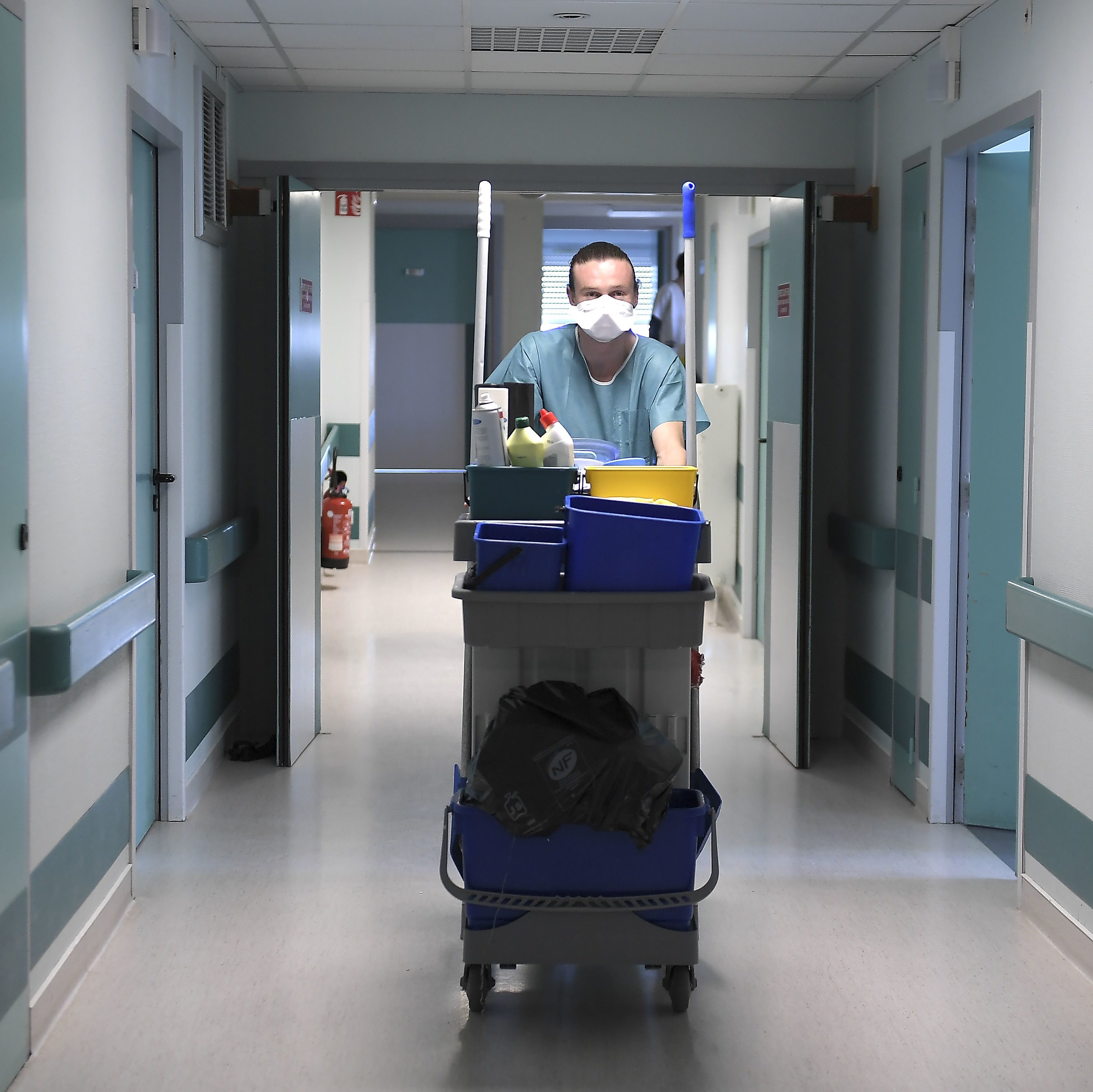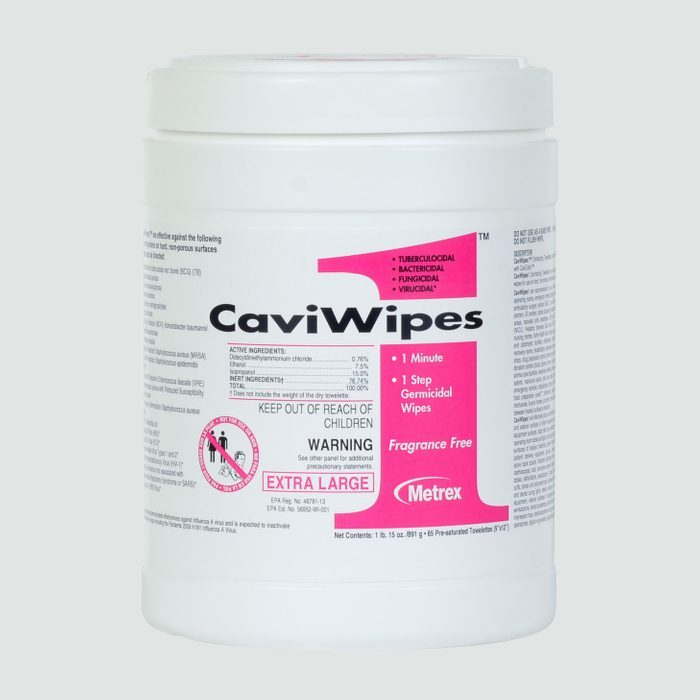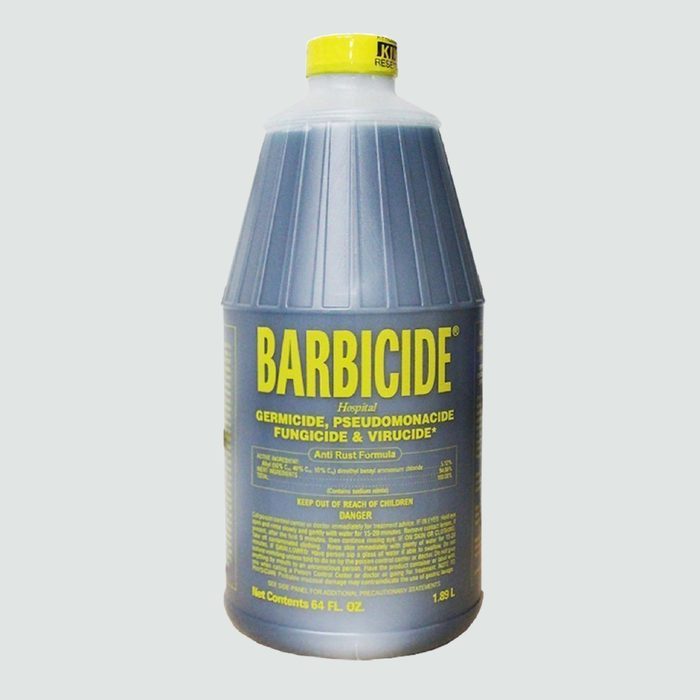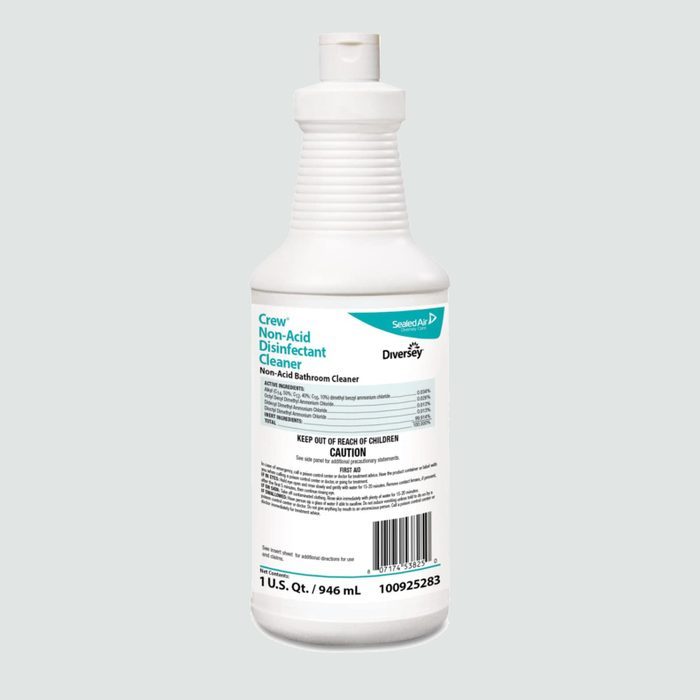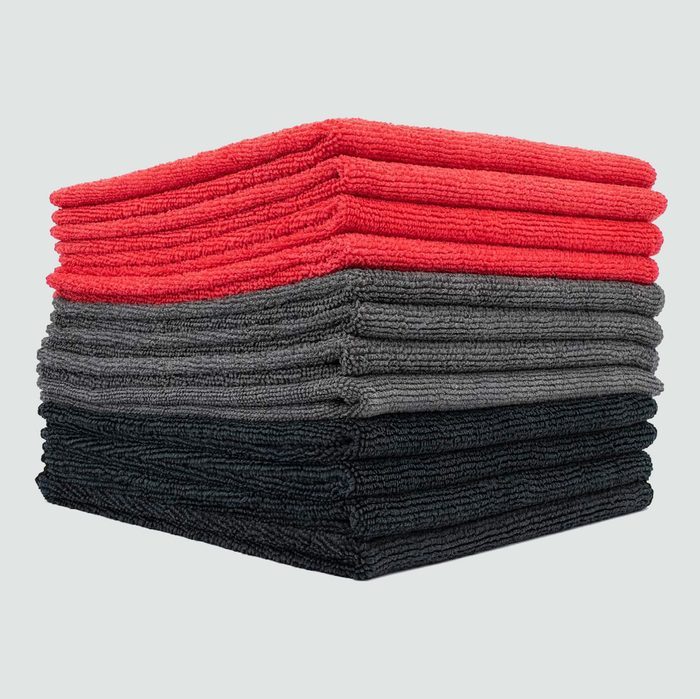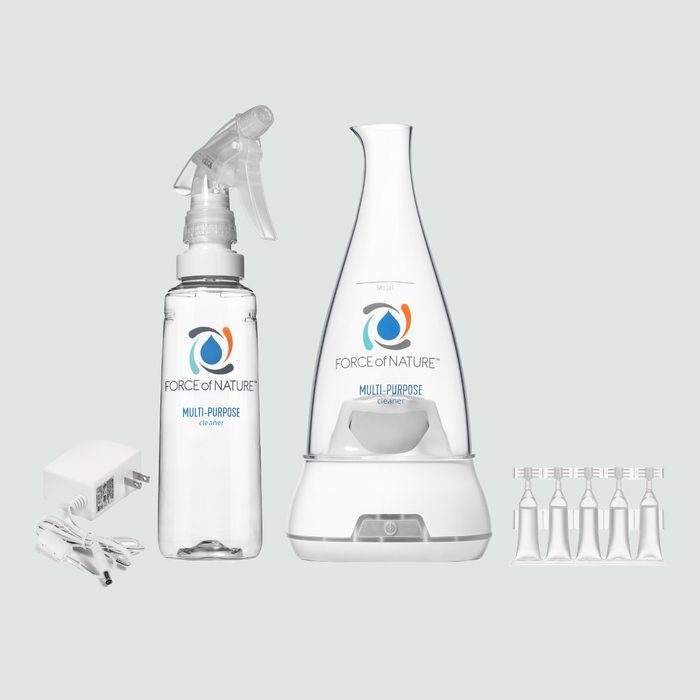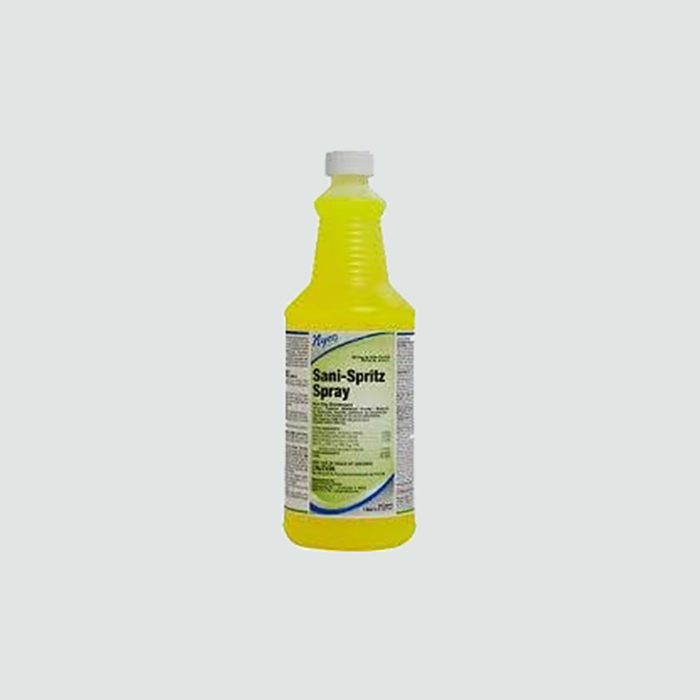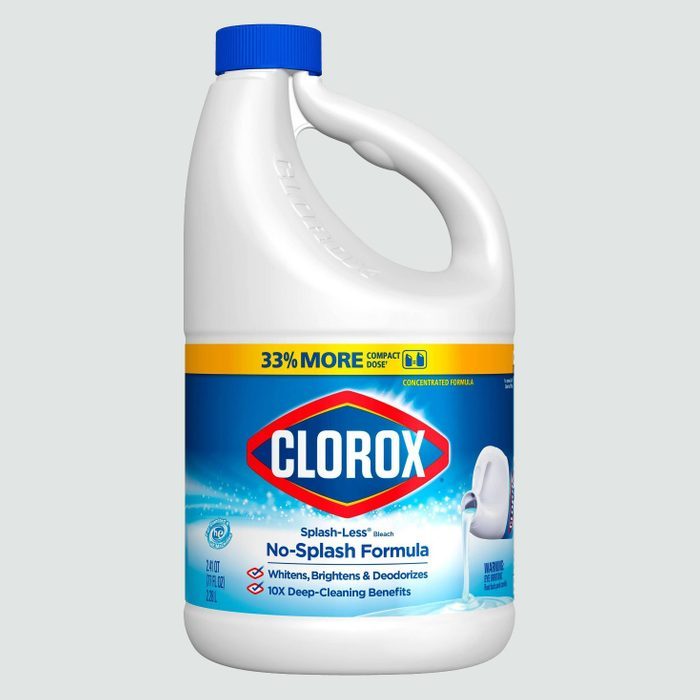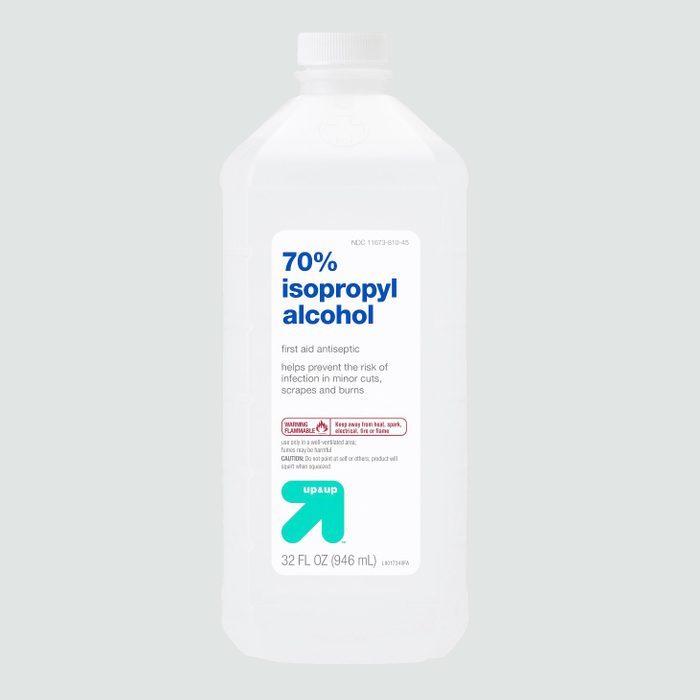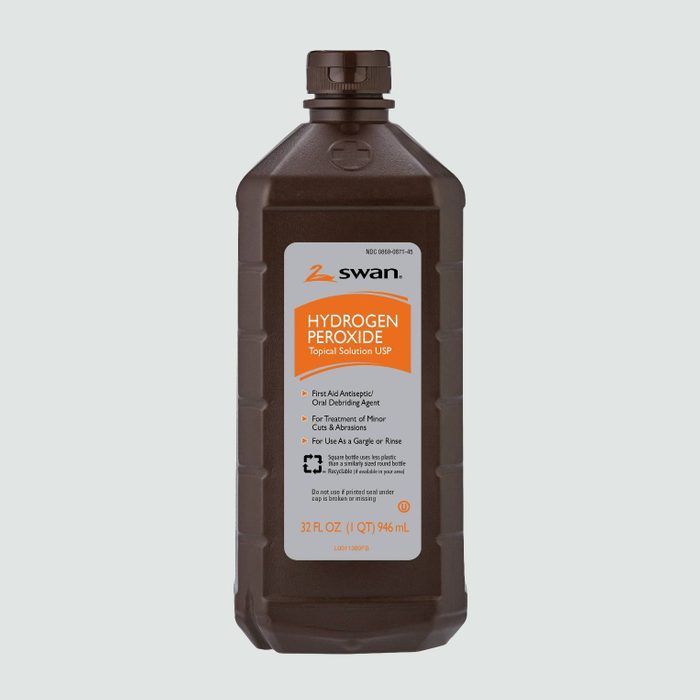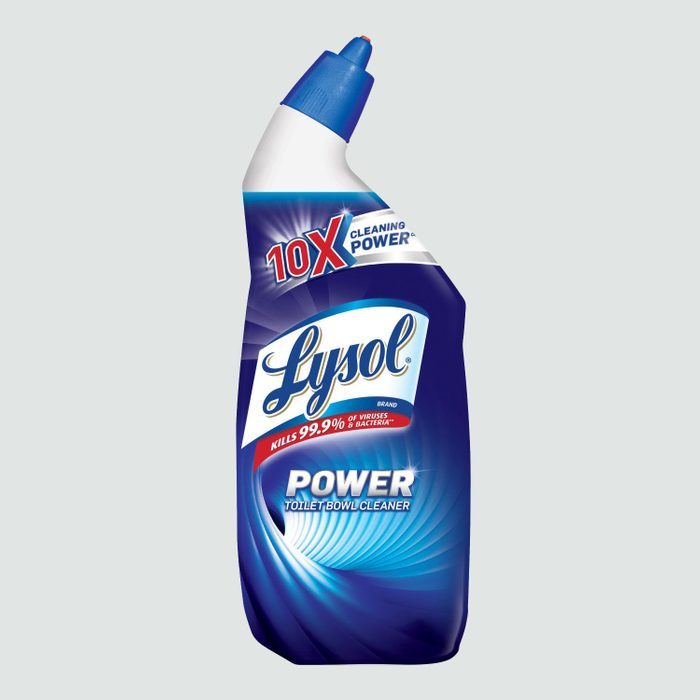If you don’t have any rubbing alcohol on hand, 3 percent hydrogen peroxide is a solid backup—and it’s super inexpensive. However, Feld notes, it takes longer to work. In fact, while rubbing alcohol can kill coronavirus germs in five minutes or less, you’ll need to leave this on for 20 minutes. Yes, it’s a long time, but it’s good in a pinch when so much is sold out, and it doesn’t have a strong odor like bleach does. So, set your alarm and tackle some other cleaning projects while it’s working its magic. Plus, Feld adds, “there’s no need to [thoroughly] wash it off; a wipe-down is enough.”
You may have never heard of it, but that doesn’t mean it’s not good. Thymol, an all-natural disinfectant derived from thyme oil (yes, as in the thyme in your spice rack), was recently given the EPA’s stamp of approval against coronavirus. According to Michael Rubino, president of the cleaning company All American Restoration, there are two standout products on the market that contain thymol: Concrobium Broad Spectrum Botanical Disinfectant and Benefect Decon 30. While the latter is currently sold out, you can still get your hands on Concrobium.
Using a botanical product like this has some serious perks, too. Aside from being effective, it doesn’t carry a toxic-exposure risk because it’s chemical-free. In fact, you can enter the space where you’ve used it almost immediately without being overcome by noxious fumes. “Our team has used these botanical products to disinfect places like ob-gyn and pediatric offices since children are often around these places and we don’t want to risk their exposure to more abrasive disinfectants,” says Rubino.
For more strategies to stay safe through any season, see our comprehensive Coronavirus Guide.
What to look for when buying the best hospital-grade cleaning supplies
When looking for the best hospital-grade cleaning supplies, here are a few key features to consider before purchasing.
Efficacy and disinfection power
- EPA registration: Select cleaning products registered with the U.S. Environmental Protection Agency (EPA). These cleaning supplies meet the agency’s rules for hospital-grade disinfectants.
Broad-spectrum efficacy: Ensure cleaning products fight against various microorganisms, including bacteria, viruses, fungi, MRSA, VRE, C. difficile, and other hospital-acquired infections (HAIs). All of these organisms can trigger infections in a hospital.
- Kill time: How long does it take the disinfectant to kill germs? Look for products with a kill time of approximately 30 minutes or less. Faster kill times yield more effective cleaning.
Compliance with healthcare standards
Compatibility with surfaces
- Non-corrosive formulas: Non-corrosive materials include quaternary ammonium, hypochlorite, accelerated hydrogen peroxide, phenolics and peracetic acid. Locate products safe for use on various surfaces, such as stainless steel.
- Residue-free: Select cleaning products that don’t leave a greasy or sticky finish behind and don’t need to be rinsed. Residues can welcome dirt.
- pH-balanced: pH-balanced cleaners are non-irritating and non-drying. They are also non-sensitizing, which means they don’t prompt redness, itchiness or tightness in the skin.
Safety
- Non-toxic and low odor: The cleaner you choose must be non-toxic and have a low odor; otherwise, it can be dangerous if it gets in the eyes and other delicate areas.
- Hypoallergenic: Anything with synthetic fragrances, such as bleach, SLS, formaldehyde, phosphates and parabens, is hypoallergenic. If your skin is native to these, look for dealers that use other ingredients like unscented options.
- Personal protective equipment (PPE): Consider necessary PPEs, such as masks, with cleaning supplies.
Ease of Use
- Ready-to-use formulas: Choose formulas that don’t require diluting and mixing with other liquids. It’s best to have a cleaner ready to go at a moment’s notice.
- Sprays, wipes and concentrates: Sprays and wipes are the easiest to use, but concentrates must be mixed and diluted with water or otherwise specified by the directions.
- Color-coded systems: Adopt a color-coded system to make your hospital-grade cleaners easy to differentiate from other supplies. Label these with bright colors so they will be noticed quickly.
Environmental considerations
- Eco-friendly options: Eco-friendly hospital-grade cleaners are formulated with fewer harsh chemicals and are safe around food and pets. However, they may require more elbow grease.
- Green certifications: A green certification is an official notice recognizing a product as having environmentally friendly practices or features. Certifications that can be given are Energy Star, Green Seal and Forest Stewardship Council.
Multi-purpose vs. specialized products
- Multi-purpose cleaners: These offer versatility and clean multiple surfaces, such as countertops, floors, windows and kitchen appliances, such as stovetops or microwaves.
- Specialized cleaners: These products are made specifically to clean designated areas or to treat a prescribed issue.
Why you should trust us
Rachel Sokol is a longtime contributor to Reader’s Digest and is an expert in writing cleaning and health round-ups. She’s curated shopping guides for over 20 years.
Bill Klehm, HouseCheck CEO and founder of StayHealthy’s CovidClean website, shared his expertise on COVID protocols and hospital-grade cleaning supplies certifications.
We also consulted Melissa Homer, the Chief Cleaning Officer of MaidPro. MaidPro is a professional house cleaning and maid service company that offers customized cleaning plans tailored to client’s specific needs. MaidPro is known for its commitment to quality, using environmentally friendly cleaning products and offering a 49-Point Checklist that ensures thorough cleaning in every room of the house.
How we found the best hospital-grade cleaning supplies
To find the best hospital-grade cleaning supplies, we consulted with experts and considered each cleaner’s efficacy and disinfection power, compliance with healthcare standards, compatibility with surfaces and environmental considerations. We also researched top cleaning brands with hospital-grade products. From there, we tested several options and analyzed customer reviews to finalize this list.
FAQs
What cleaning products do they use in hospitals?
Hospitals use EPA-registered disinfectants, including hydrogen peroxide, Clorox Healthcare, chlorine, disinfecting wipes and iodophors, to keep buildings bacteria-free.
What is a hospital-grade disinfectant?
Hospital-grade disinfectants are EPA-registered cleaning solutions that kill bacteria, viruses, and fungi on surfaces. These cleaners are also used on medical equipment to ensure they stay sanitary for treatment and adhere to rigorous infection control standards.




















